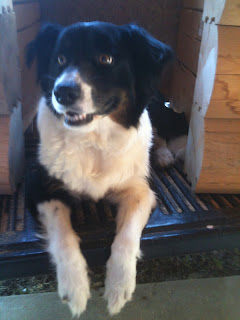More on the fascinating life of Goodnight...
Goodnight lived until
1929 - my momma was nine years old when he died, and they both lived in the panhandle. Cool. My momma could have KNOWN Charles Goodnight! When we go to Palo Duro we usually turn off of the highway in a little town called Claude. That's Goodnight's place, and they're refurbishing his home and turning it into a historic museum. It should be open in the next year or so, and I would LOVE to go!
Wikipedia says that "Goodnight is also known for rousing and leading a posse against the
Comanche in 1860 that located the
Indian camp where
Cynthia Ann Parker was living with her husband,
Peta Nocona, then guiding Texas Rangers to the camp, leading to Cynthia Ann's recapture.
[2] He later made a treaty with her son, Quanah Parker."
Where we live in East Texas is really close to Fort Parker where Cynthia Ann's family lived (Fort Parker) at the time she was originally captured by the Comanche. Texas may be huge, but we all seem to be connected anyway. Cynthia Ann's son, Quanah, has a town named after him. It's just a few miles from my momma's birthplace of Chillicothe. Quanah hung out in a place sacred to the Comanche, a place called Medicine Mounds. You could see it from momma's childhood home. John took a picture of it on our way to Palo Duro:
This photo was from the rest stop that had the rattlesnake warning. Momma always said Medicine Mounds was
full of rattlesnakes and for us to never, ever go there.
Goodnight married in 1870. He developed a practical side-saddle for his wife to use, paid for a Methodist Church to be built in town, established a school for educating beyond the primary grades, and funded a college.
In 1876, the Goodnights preserved a heard of native buffalo (American bison) that survive today in Caprock Canyons State Park in the Texas panhandle. Some of these were taken to Yellowstone in 1902. Some of them also went into large zoos and ranches throughout America. Goodnight also crossbred buffalo with domestic cattle, calling them
cattalo
In 1880 Goodnight helped found the Panhandle Cattleman's Association. (That's a big, BIG deal in Texas!)
Goodnight's JA Ranch ultimately covered a million acres of panhandle real estate. There he crossbred the wild Texas Longhorns with England's Hereford cattle. There was a movie starring Jimmy Stewart and Maureen O'Hara telling that story! (Go-o-o-o-o-d movie!)
His first wife died in 1926. In 1927, at the age of 91, he married a distant cousin whom he had corresponded with over the years and who had nursed him through an illness following his first wife's death. A few months before he died he was baptized into her church. The pastor said that Goodnight had "always been deeply religious and reverential by nature."
During his life, Goodnight had worked as a banker and newspaper man (though he never learned to read or write!), also invested in Mexican silver mines (a losing venture - which ultimately cost him ownership in the JA Ranch...) and for a time lived in Pueblo, Colorado where he even owned a part in the opera house.
Historian J. Frank Dobie said that Goodnight "approached greatness more nearly than any other cowman in history." Goodnight is also sometimes known as the "father of the Texas Panhandle."
If this one man could do all of this in his lifetime without ever learning to read or write, you, me, ANYONE can do ANYTHING if they will just get up and DO IT!
P.S. After Goodnight left the JA, Tom Blasingame came to the ranch and was to become known as the oldest cowboy in the history of the American west, dying in 1989. Good grief! I was nearly 40 by then!
I could have known Tom!










































